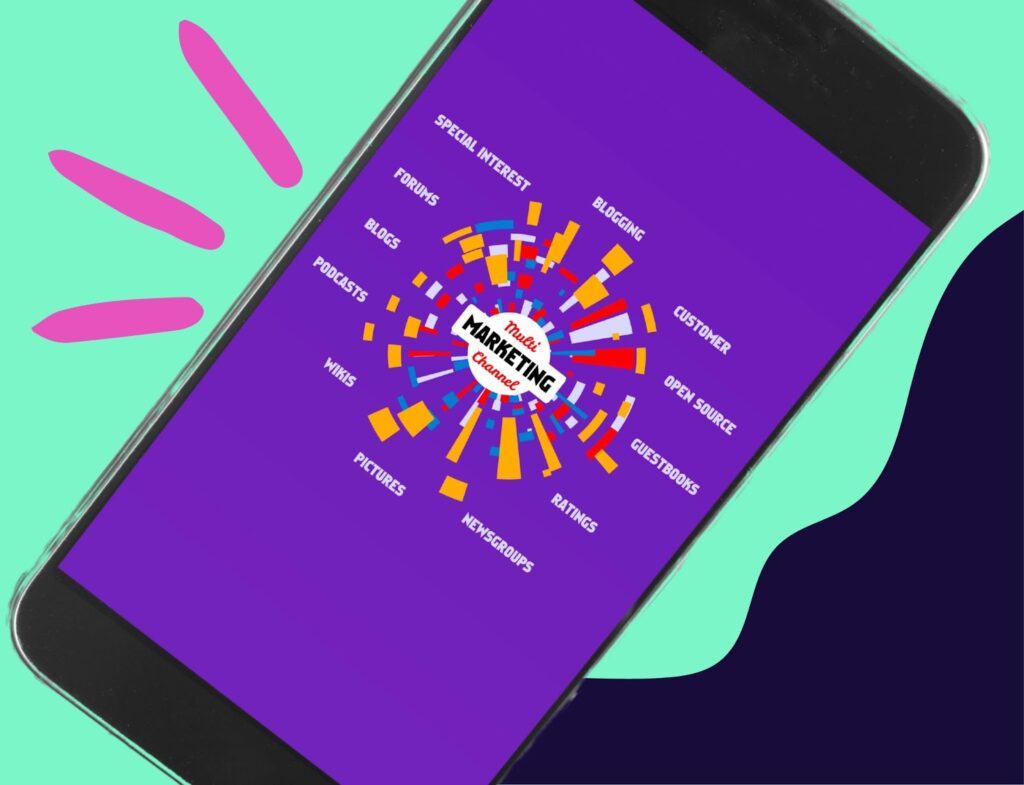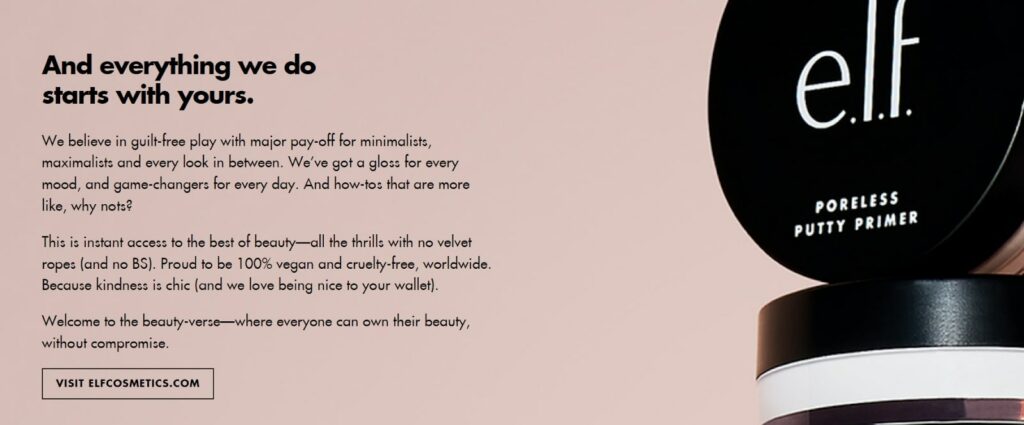What you’ll learn
What do Samantha Jones and brand consistency have in common? Picture this scene: Carrie from Sex and the City arrives at ladies’ night at a fabulous cocktail bar. Already, she sees four cosmos on the table. Who ordered them? None other than Samantha, of course—the infamous femme fatale who loves her besties, bars, and bedroom escapades.
That’s just who Samantha is, and we love her for it. The truth is we all find comfort in friends who are consistent, no matter the time or place.
And guess what? Your audience appreciates consistency, too—more specifically, brand consistency. They look for it in everything you do, from Instagram Reels and blog posts to search ads on Google’s search engine results page (SERP).
We sat down with Lyon Content CEO and brand messaging extraordinaire Christina Lyon to get the scoop on maintaining consistent messaging, cross-channel marketing tips, and why every target audience needs a reliable, recognizable brand voice AKA Samantha Jones.
What is Brand Voice?
Brand voice channels your business’s personality, value, and vibe across all your marketing channels. Think about it: nobody hires you based solely on your resume, right? The interview is your chance to dazzle and channel your value through…
Your voice! 📣
And your company has that same power through your brand voice. It’s the magic that convinces your audience to stop scrolling, but most importantly?
Trust you.
Like you.
And? Buy from you.
Of course, cultivating a brand voice takes time. Your target audience needs time to get familiar with it, and there’s no quicker way to accomplish that than with cross-channel marketing.
What is Cross Channel Marketing?
Cross-channel marketing (or multichannel marketing) refers to content creation and distribution for your audience across multiple marketing channels. This includes:
- Your brand’s website
- Blog
- Paid search and social media (LinkedIn, Pinterest, Twitter, Facebook, Instagram, TikTok, etc.)
- Organic search and social media
- Forums
The goal? Multiple touch points to engage and convert your audience. Plus, it increases customer loyalty and retention, too.
But here’s the thing: you can post all the Reels, blog articles, and Tweets you want. Yet, if you don’t channel brand consistency across every post and platform? Your audience won’t take you seriously, and you can kiss your marketing budget goodbye. 💸
We don’t want that for you, which is why we’re here to help you get proactive and consistent with a brand messaging guide. In the meantime, let’s go through each channel’s nuances and discuss how to stay on-brand.
Understanding the Key Differences Between Marketing Platforms
Cross-channel marketing is a balancing act of nuance and brand consistency. We’ll dive deep into maintaining brand voice and language across all your channels. But first? We’ve gotta learn how each platform differs so you can make the most of each in your strategy.
Social Media Content
This is a broad window since we’re dealing with the B2B profesh LinkedIn and Gen-Z TikTok demographics all in the same breath.
But the bottom line for social media content? It’s a courting game.
These are some of your brand’s first interactions with your target audience. So you want to offer seamless experiences that are breezy and enjoyable, not too salesy. Keep the buyer’s journey in mind, too. At this point, you’re dealing with top-funnel peeps in phase one: awareness.
That’s why social media content needs to introduce your brand in a cohesive and reputable light. You could leverage Instagram posts to share industry insights or knowledge tidbits in infographic form. Or, you could demo your product value in a fun, lighthearted TikTok Reel.
But should brand voice change, even slightly, when working with different social media channels? Christina says absolutely:
“A brand posting on LinkedIn is going to communicate more formally than they would in a viral TikTok comment section.”
What’s behind channel #2?

Email Marketing
Emails give you a little more room to paint a picture of your product’s value, as well as your brand personality. People might open your newsletter with a cup of coffee and casually skim a series of industry highlights, blog posts, or detailed solutions to their pain points.
And while you have more wiggle room in word count with emails, your reader also has higher expectations. Most of the time, readers only scan their emails so you need to capture their attention immediately.
This is where your brand voice meets personalization. Tailoring your message to the individual reader is a game-changer for today’s email marketing strategies. By working with multiple pitches for each recipient, you enhance the customer experience and foster stronger relationships.
Christina also points out that email marketing insights can benefit other facets of your cross-channel marketing strategy, too:
“Are you getting more engagement and feedback from your newsletters as opposed to your Instagram?” asks Christina. “See what you can migrate from your newsletter into your brand voice on social. Maybe you’re telling more compelling stories to newsletter subs that you can also share in BTS social media content.”
Now, for the heartbeat of all your digital marketing efforts:
Website Content
Honey, I’m home. That’s the vibe your brand voice should exude on your website. Web content, including website copy (like about pages or service pages), as well as blog content and case studies, should be the ultimate showcase of your brand personality.
Your audience is here to do one of two things:
- Learn more about your brand: They’ve already grazed your socials and maybe opened an email or two. Now, your audience wants to dig even deeper into who you are and what you stand for.
- Buy something: Now’s the time to use your brand voice to lay it on thick with persuasive CTAs and stunning visual elements that entice a conversion.
Our advice? Start with website content. Make it the foundation of your marketing channel brand voice, then adapt according to each platform’s nuances. And if you need a helping hand? Lyon Content’s skilled wordsmiths are at your beck and call for kickass website copywriting.
But before you do that, you’ve gotta nail your brand messaging and voice.

How to Keep Consistent Messaging Across Channels Within Your Brand
Samantha Jones certainly doesn’t need a playbook to exude her signature sex appeal or deliver a punchline in every scene. Her persona is naturally woven into every interaction she has with the world.
Your goal? Make your brand voice and personality as recognizable and reliable as Samantha’s. But since you are the big-thinking visionary here, you’ll have to guide your content with the right brand consistency tactics.
Step one: honing in on your signature lingo.
Keep Your Tone and Language Consistent
Tone of voice is how your brand sounds to your readers across your content, while language speaks to the words you use. For example, Samantha’s known for her sassy tone and upscale vocabulary, though she does throw in cheeky, made-up words like “d*ckalicious” and “try-sexual” every so often.
The best way to keep tone and language consistent for brand consistency?🤔 Christina swears by a style guide:
“You should have everyone on your team follow a style guide with do’s and don’ts. This will help maintain uniformity in your messaging, regardless of the platform.”
Let’s say you’re an affordable, ecommerce hair care line targeting a mid-20s female audience. You might opt for a tone of voice and language that your audience can relate to. A snippet of your style guide might look like:
Tone do’s
- Breezy yet direct
- Confident
- Empowering
Tone don’ts
- Vapid or vague
- Cocky
- Overly mature
Language do’s
- “Slay queen”
- Emojis (sparingly)
- Pop culture references
- Grade 8 reading level
Language don’ts
- Complex industry jargon
- Swear words
- Negative language
Need help with your style guide? Our writers are ready to sink their teeth into your content and value propositions to craft a brand messaging framework that’s unmistakably you.
Next item on the docket?
Don’t Forget to Keep Your Brand Personality In Tact
Brand voice and personality go hand in hand, according to Christina:
“They’re the same strain. Your voice is how audiences instantly identify your brand from competitors, so treating it as a one-of-a-kind personality is important for differentiating yourself.”
Your style guide might include a few more do’s and don’ts for brand consistency and personality, like:
- Girly
- Supportive
- Bold
One makeup brand with an undeniably unique brand identity? E.l.f:

Wow. We hear a distinct brand persona behind this web copy.
Here are some lines that scream supportive:
“Because kindness is chic (and we love being nice to your wallet).”
“Everyone can own their beauty, without compromise.”
And a few more that channel boldness and authority:
“Proud to be 100% vegan and cruelty-free, worldwide” (especially the worldwide, that’s a subtle plug highlighting their global reign).
We’ve got a glass for every mood, and game-changers for every day.”
Even the parallelism of each sentence reflects e.l.f’s confident and complete brand personality.

Create a Bulletproof Audience Persona(s)
One of the best ways to enhance brand consistency is to make sure you’re talking to the same target audiences. Meaning? You need to know them inside out. 🔍
Audience research into demographics, interests, purchase history, customer surveys, competitor interactions, and social media activity helps you dissect your target audience into clear personas. This helps remind you of exactly who you’re creating content for every time. Christina’s first step? Keyword research.
“It’s a great place to start because it clues you into what your ideal audience is actively searching for on search engines,” she says. “If they’re Googling it and it relates to your biz and niche, you should include those topics in your overarching strategy and build marketing campaigns for each channel.”
But doesn’t each platform have a different audience? Christina highlights that’s not always the case:
“While the format can change (e.g. short, snappy Instagram captions vs. long-form, conversational blog posts), you’re still targeting the same ideal customer profile (ICP).”
The only difference? They might be at different stages of the customer journey, which, along with platform nuances, can tweak the delivery of your content.
Christina elaborates:
“Audience stages in the customer journey might change, but personas should remain cohesive across all channels. Regardless of the platform, their struggles and interests will be the same, and their values are consistent—so your brand consistency and brand voice should be, too.”
If it isn’t, your first job is to become aware ASAP.
Identify Brand Inconsistencies
Ever scrutinized your content, convinced it had to be perfect? After pouring countless hours into each social media post, blog article, or tweet, you were proud of your work.
The catch? Focusing so closely might make you overlook a subtle switch of voice across different channels. It’s a common hiccup, even for seasoned content writers.
The best way to assess your cross-channel campaigns and nip inconsistencies in the bud? Christina breaks down which metrics give you these answers:
“You want to see an uptick of engagement across all channels. If you’ve been consistent with a social posting schedule and are beginning to see more traffic and actions taken on your site, this means you’re effectively cross-channel marketing. What you don’t want to go on are vanity metrics alone, which can muddy the water of your results.”
WTF are vanity metrics? These are your followers, likes, comments, or page views. They’re numbers that might look impressive but don’t really show a return on investment (ROI).
What truly matters is actionable metrics (like click-through rates and conversions), which offer bonafide insights for biz growth. We might know someone who can help.😉

Build Brand Consistency with Lyon Content!
We see you and your products. Dedication? Passion? Quality? All consistent.
The only thing missing is brand consistency (messaging across all channels) and brand voice. But with the right style guide, audience personas, and cross-channel performance monitoring, you can comfort, engage, educate, and convert your target audience.
Christina’s initial order of business?
“The first step should always be to build a content strategy, then build out the spokes of your omnichannel marketing from that strategy.”
But what if your in-house marketing team doesn’t have the chops to ensure a cohesive strategy across all platforms? Christina says this is a recipe for branding chaos:
“Having siloed teams create the content without the backbone of an overarching content strategy will result in mixed messages between platforms and confuse your audience.”
Rather avoid those blunders? Walk with our pride.🦁⚡
Lyon Content’s skilled and experienced SEO content writers are on deck to boost your brand’s rep, content, and rankings for ultimate niche authority and ROI. Let’s start a project together.

11/27/2023
Chrissy is a contributing writer at Lyon Content based in Toronto. She loves writing and editing tech, marketing, and lifestyle content. But her favorite part of writing is helping businesses express themselves. When she isn't writing, she's traveling as much as possible and eating a lot of cheese.





